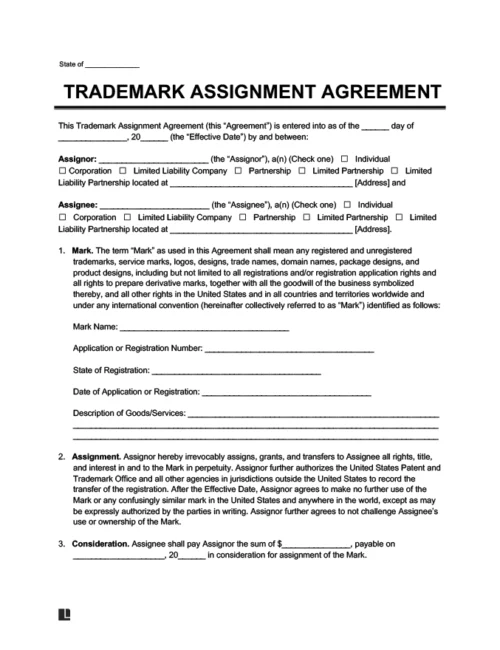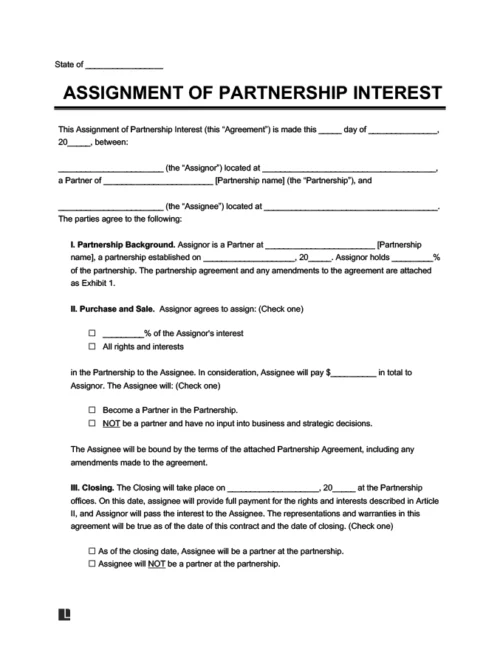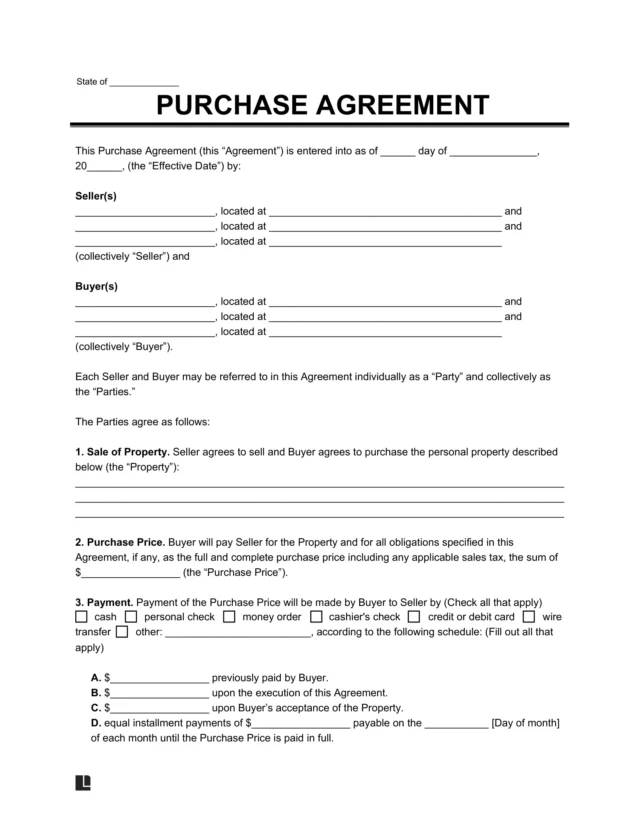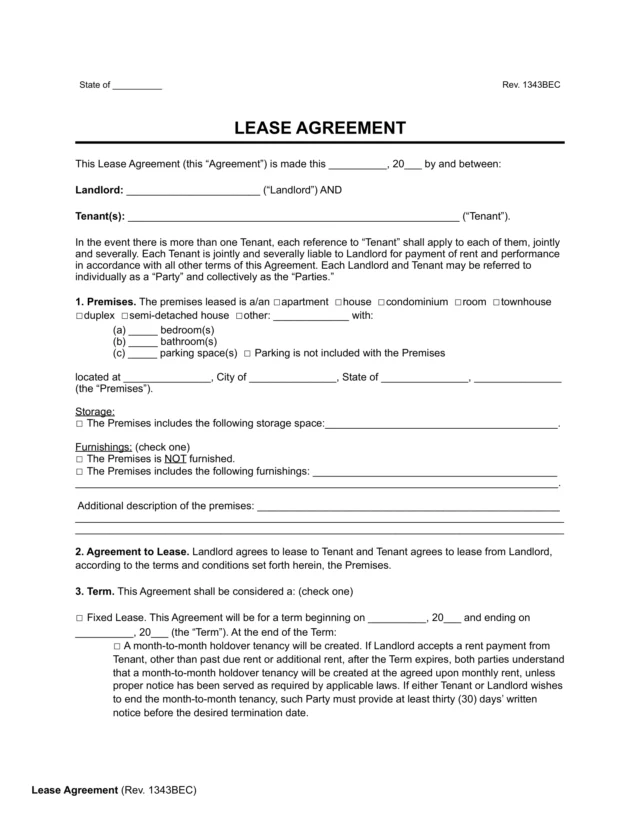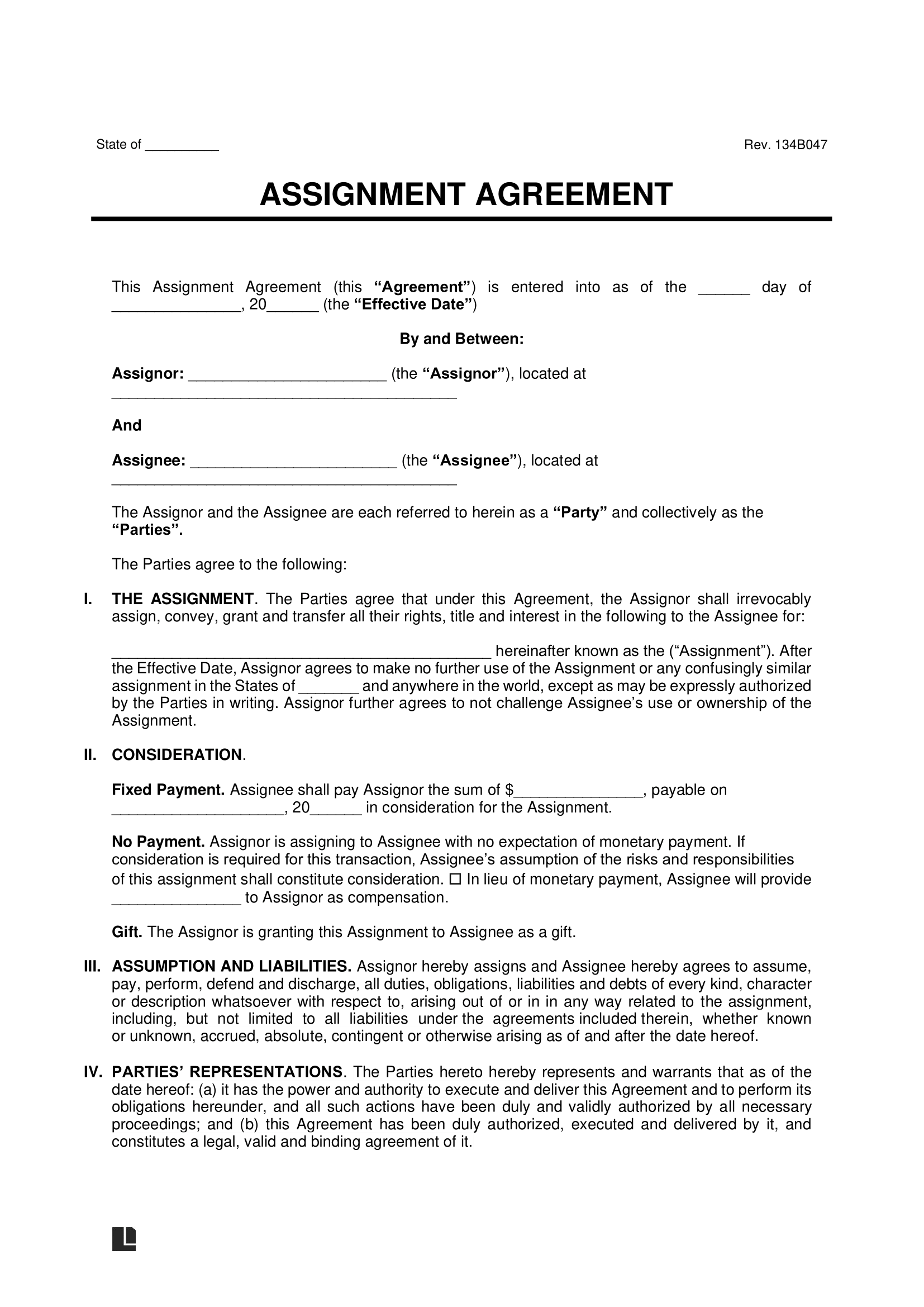By Type
What Is an Assignment of Contract?
An assignment of contract is the legal transfer of rights, property, or benefits from one party to another. In many cases, the transfer includes both rights and duties, unless the contract says otherwise. The written record of this transfer is called a contract assignment agreement.
Two parties take part in the transfer. The assignor gives up the rights, and the assignee accepts them. Once the handoff takes place, the assignee deals directly with the other original party. The assignor may still remain legally responsible, unless the contract or a release clearly states they are free of future obligations.
Assignments are common in both contract law and property law. For example, a tenant might transfer a lease to someone else, a borrower might reassign a loan, or a business could pass on benefits under a service contract.
- Lease transfers let new tenants step in under the same terms.
- Loan reassignments allow a new party to take on repayment duties.
- Service contracts can move to another provider or beneficiary.
Assignment Agreement vs. Assignment and Assumption Agreement
A contract assignment agreement focuses mainly on transferring rights. The assignor steps back, while the assignee takes over the benefits. Duties may or may not move with the transfer, depending on how the contract is written.
An assignment and assumption agreement creates a more complete transfer. It not only shifts the rights but also makes the assignee accept the obligations. When the other party consents, the assignor can often be released from future liability.
Put simply, a contract assignment agreement transfers rights, while an assignment and assumption agreement transfers both rights and obligations, making it a more complete handoff.
When Do You Use an Assignment Agreement?
A contract assignment agreement is used when one party transfers its contract rights or obligations to another. Common situations include:
- Subletting or transferring a lease
- Selling a business asset tied to existing contracts
- Assigning intellectual property rights
- Transferring debt to another party
- Protecting information and inventions in employment settings
Some contracts require the other party’s consent before the assignment can take place. In those cases, the agreement provides proof of approval and records the change. It also prevents disputes by clarifying who is responsible after the transfer.
A lease transfer is a simple example. A tenant signs an assignment agreement to pass the lease to a new renter. From then on, the landlord deals directly with the new tenant, while the original tenant may still remain liable unless the landlord agrees to release them.
What to Include in an Assignment Agreement
An assignment agreement works best when each part is clear and specific. The key elements usually include:
- Assignor: Name the person or business giving up their rights. This sets out who is transferring the interest.
- Assignee: Identify the party receiving those rights. This shows who will step into the contract.
- Consideration: Anything of value that is being transferred in exchange for the assignment
- Subject of the assignment: Describe exactly what is being transferred, such as a contract, property, or services.
- Liabilities: Note if obligations or debts also move to the assignee. This prevents disputes about responsibility.
- Third-party approval: Confirm whether consent from another party is required and, if so, that it has been obtained.
- Effective date: State when the transfer begins so everyone knows the timeline.
- Governing law: Specify which state’s laws apply if a dispute arises.
Together, these details create a complete record of the transfer and reduce the chance of confusion later.
Assignment Agreement Sample
The sample below gives you a clear picture of a contract assignment agreement. When you’re ready, customize our assignment agreement template and then download it in PDF or Word.



